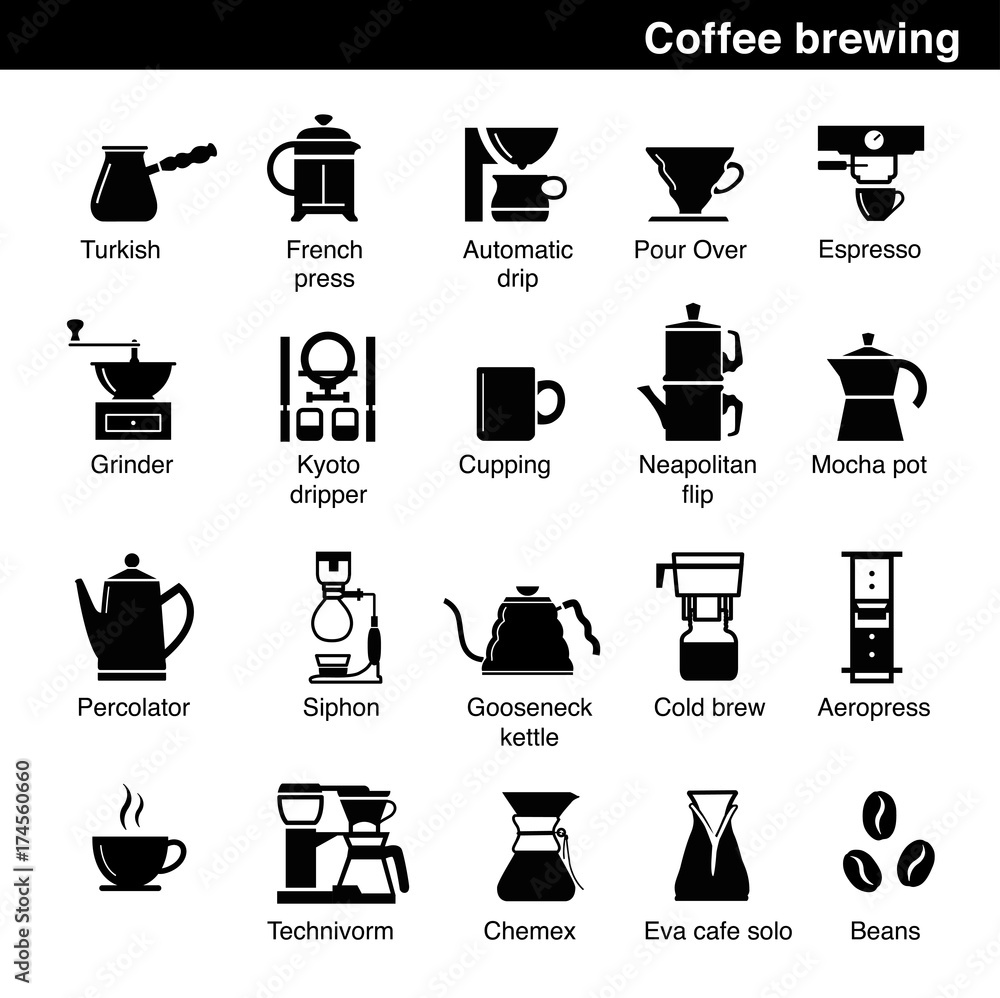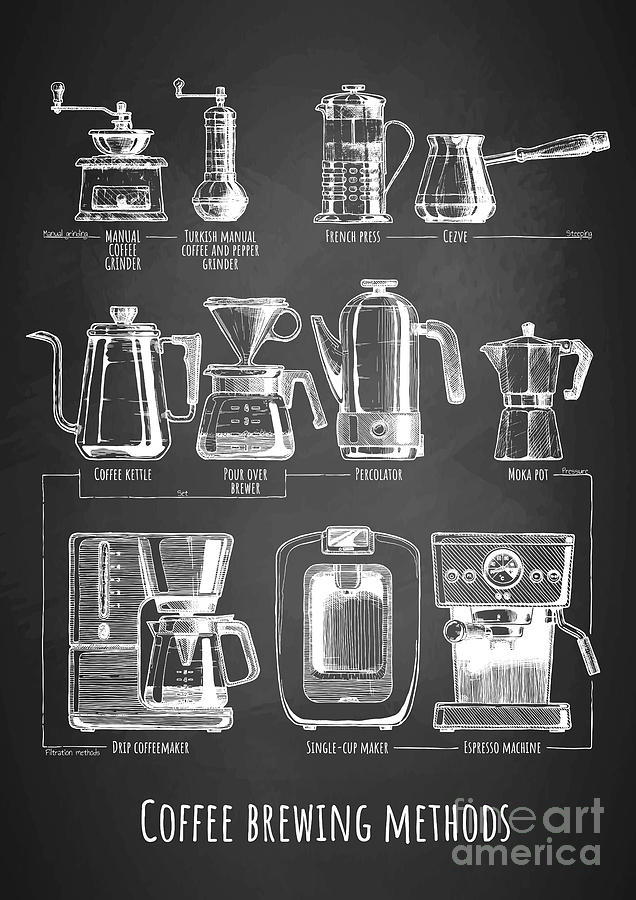The Science Behind Coffee Developing: Just How Temperature Level and Time Affect Your Drink
Recognizing the scientific research behind coffee brewing exposes that temperature level and time are not plain variables but essential components that determine the drink's flavor profile and general high quality. The optimal brewing temperature generally drops in between 195 ° F and 205 ° F, while the period of removal varies considerably throughout different approaches. This interplay of factors can result in a mug that is either unsatisfactory or fascinating. As we explore the nuances of these components, the question arises: exactly how can one efficiently balance temperature level and time to achieve that excellent mixture?
The Chemistry of Coffee Removal
The chemistry of coffee extraction looks into the complex processes that change raw coffee beans right into the fragrant drink appreciated worldwide. This improvement largely includes the solubility of different substances present in the beans, which are influenced by variables such as grind dimension, water high quality, and the developing method used.
During the brewing procedure, hot water acts as a solvent, removing soluble compounds, consisting of caffeine, sugars, lipids, and acids, from the coffee premises. Each compound adds to the taste profile, fragrance, and body of the last drink. Acids are accountable for zesty and brilliant notes, while oils contribute to a rich mouthfeel.
The removal process is not uniform; different substances dissolve at different prices. The initial phases of brewing essence acids and sugars, causing a positive level of acidity, while long term removal can lead to anger as a result of over-extraction of unwanted compounds. Recognizing these chemical communications is critical for enhancing brewing strategies, as the balance between removal time and water temperature can considerably influence the overall top quality of the coffee. Ultimately, understanding the chemistry of coffee removal is essential to achieving a flavorful and well-shaped mug.
Suitable Brewing Temperatures
Locating the right brewing temperature is necessary for unlocking the full possibility of coffee tastes and aromas - coffee brewing methods. Research study suggests that the optimum variety for brewing coffee lies in between 195 ° F to 205 ° F(90 ° C to 96 ° C) Within this range, the removal procedure successfully liquifies the preferable soluble substances in coffee beans, leading to a savory and balanced mug
Developing at reduced temperatures, such as listed below 195 ° F(90 ° C ), may lead to under-extraction, generating a weak and acidic mixture with soft tastes. Conversely, brewing at temperature levels going beyond 205 ° F(96 ° C) can bring about over-extraction, creating a rough and bitter preference as a result of the too much dissolution of undesirable compounds, such as tannins.
Moreover, the perfect brewing temperature can differ relying on the coffee bean kind and roast level. Lighter roasts commonly benefit from a little higher temperature levels to improve their complex flavor profiles, while darker roasts might be better matched to reduced temperature levels to minimize resentment.
Eventually, keeping precision in brewing temperature levels is essential for accomplishing an unified balance of flavors, making sure that every mug of coffee provides an enjoyable sensory experience.
Effect of Developing Time
Brewing time plays an essential role in determining the taste account and overall quality of coffee. The removal procedure, which affects the taste, scent, and body of the beverage, is greatly reliant on exactly how long the coffee premises touch with water. Much shorter brewing times can result in under-extraction, bring about a weak or sour taste, as inadequate soluble substances are liquified. Alternatively, long term developing can result in over-extraction, where unwanted substances are launched, leading to an astringent or bitter preference.
Ideal brewing time varies depending upon the technique used and the grind dimension of the coffee. A French press commonly calls for concerning 4 mins, while espresso extraction is generally completed within 25 to 30 secs. It is crucial to calibrate brewing time in conjunction with other variables, such as water temperature level and coffee-to-water ratio, to achieve the wanted taste profile.
Comprehending the influence of brewing time allows coffee enthusiasts to fine-tune their brewing methods, ultimately improving the sensory experience of their mug (coffee brewing methods). With careful focus to this variable, one can unlock the complete possibility of the coffee, exposing its one-of-a-kind qualities and subtleties
Brewing Techniques and Their Results

As an example, approaches like French press and cold brew enable for a longer steeping time, leading to a fuller body and durable flavor because of raised extraction of oils and soluble solids. On the other hand, espresso developing uses high pressure and a shorter removal time, producing a concentrated shot that highlights extreme tastes and an abundant crema.
Pour-over strategies, such as Chemex or V60, supply an even more regulated removal procedure, enabling the maker to control circulation rate and water distribution, which can enhance brightness and clarity. Percolation methods cycle water through the coffee straight from the source premises numerous times, leading to a more powerful, commonly bitter flavor.
Finally, using paper filters versus metal filters can also impact the last preference; paper filters commonly produce a cleaner mug by trapping oils and fine fragments, while metal filters permit even more oils to travel through, adding to a fuller mouthfeel - coffee brewing methods. Recognizing these nuances can elevate the coffee experience significantly
Tips for Refining Your Brew
A More Info well-executed mixture can transform also the simplest coffee right into a remarkable experience. Grind the beans simply prior to brewing to take full advantage of freshness, making certain the grind dimension matches your brewing method-- coarser for French press and finer for coffee.
Water high quality plays a crucial role; usage filtered water without impurities. The excellent brewing temperature level ranges in between 195 ° F and 205 ° F(90 ° C to 96 ° C ) Too hot can blister the coffee, while also great may under-extract flavors.
Timing is just as important. For immersion techniques, soaking for three to five minutes is optimum, whereas drip methods typically take around 5 mins. Experiment with brew times to discover your recommended strength.

Verdict
In summary, the complex connection between temperature level and time is extremely important in the coffee developing procedure. Sticking to ideal brewing temperatures in between 195 ° F and 205 ° F, alongside accurate timing customized to every approach, makes certain the desired flavor account is achieved. Comprehending these clinical concepts empowers people to improve their developing strategies, inevitably resulting in a much more balanced and enjoyable Learn More Here coffee experience. Proficiency of these aspects is important for any type of coffee lover seeking excellence in their drink.
Comprehending the science behind coffee developing discloses that temperature and time are not plain variables however critical elements that determine the beverage's taste profile and total high quality. Understanding these chemical communications is vital for enhancing developing methods, as the equilibrium between removal time and water temperature can significantly affect the total high quality of the coffee.Brewing time plays an essential function in determining the taste profile and overall quality of coffee. By concentrating on these elements-- bean high quality, grind size, water temperature, soaking time, and ratio-- you can raise your coffee brewing process, resulting in a continually exceptional mug.
In summary, the detailed relationship between temperature level and time is vital in the coffee developing process.